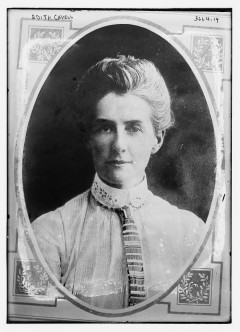By Antoine Dumas, CFICE Volunteer
On Poppy Day, we remember the members of the armed forces who died in the line of duty. During the First World War, 53 women were killed by enemy fire, disease or drowning. A total of 2,504 women served overseas, and several died in the line of duty when hospitals or hospital ships were attacked by German troops.
Women faced a significant number of restrictions on the way they could serve their country in the military and overseas. They were restricted with regard to the unit on which they could serve, the capacity they could serve in, and who they could be. Despite these restrictions, thousands more women than the military was interested in enlisting volunteered to serve during World War I. In the end over 500 medals and military decorations were awarded to women for their service.

Nursing Sisters, A.C. Andrew, R.R.C., SM. Hoerner, J.C. Brady / Infirmières militaires, A.C. Andrew, Croix-Rouge royale, S.M. Hoerner et J.C. Brady
The only unit in which Canadian women could serve during World War I was the military nursing unit of the Canadian Army Medical Corps. The unit was called the Nursing Sisters because, when it was originally formed in the late 1800s, its members were nuns. Because the nursing unit was the only overseas military option for women, the only capacity in which women could serve was as nursing staff. Most of the women who enlisted in the Nursing Sisters were professionally trained as nurses. A small number of dietitians, physiotherapists and physicians also enlisted as nurses because they were not permitted to serve in their full medical capacities in other parts of the Medical Corps.
In order to enlist as military nurses during World War I, Canadian women needed to be British subjects between the ages of 21 and 36 who graduated from a nursing school and were registered with a professional nursing association. They also had to be single (or widowed) and without children. The most commonly cited reason for resignation from the Nursing Sisters was marriage. The unit lost hundreds of nurses to this restriction, and of course, this does not take into account the countless women who simply could not enlist because they were already married or already had children.
Despite these restrictions, over 3000 women served in the military during World War I. They served with courage and gallantry. Edith Cavell, a British nurse, is an example of the courage displayed by the Nursing Sisters while oversees. During her work at a hospital in Brussels, Belgium, she helped some 200 British, French and Belgian captive soldiers escape to the neutral Netherlands before she was executed by the Germans in 1915.
Today, as we reflect on the sacrifices of the countless Canadian soldiers who gave their lives in service to our country, remember that women, despite the restrictions they faced, also served Canada in invaluable ways. In a sense, they were heroes twice: once for overcoming the obstacles and twice for their service.
